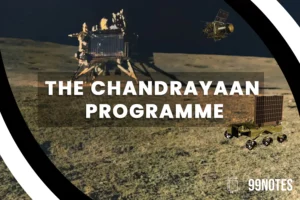8 September 2023 : Indian Express
Indian Express
8-September-2023
The Indian Express, CSE candidates can stay informed about current events and developments in India and around the world.
1) Need to address the Indo-US trust issues
Topic: GS2-IR
Context:
- There is a growing concern with regard to the relationship of both US and India with respect to China.
- Both US and India have seemed to develop some sort of trust issues amongst themselves while dealing with China.
- This article would explore the possible reasons for this mistrust and what should be the viable solutions to address these concerns that persist in India about G2 (a Sino-US rapprochement), and in the US about A2 (a Sino-India deal as part of a broader Asia-for-Asians agreement).
Why have the G2-A2 concerns reemerged?
The G2-A2 concerns have reemerged for a few reasons:
- The Indian strategic analysts have been closely following the US cabinet members trips to China, Sino-US discussions, and flaring up of the administration’s rhetoric on China.
- Similarly the US administration have been keeping an eye on Sino Indian meetings, border negotiations, the signalling from official Indian sources ahead of the BRICS and G20 summits, Delhi’s agreement for the BRICS expansion, and the Modi Xi exchange in Johannesburg.
Major Concerns
- These developments have led to apprehensions in both the countries about each other that they are trying to reset their relationship with China which might not serve very well for their own strategic interests.
- Commentators in both the countries have criticised each other’s China outreach and termed it as weakness or desperation.
- They are of the opinion that in order to stabilise relations with China for economic or political reasons, both India or US will make unilateral concessions to Beijing.
Why is this mistrust not surprising?
In some ways, the reemergence of G2-A2 concerns are not surprising.
- One of the historical reasons is the fact that there was hardly any cooperation between both the countries to counter China during the cold war era.
- Another reason is the belief that the other partner has held back in the region to further its own interests with China. For e.g. In India, there is a view that Washington didn’t do enough to deter China’s militarisation of the South China Sea while in the US people are of the opinion that the desire not to provoke China made India shy away from the Quad for a decade.
- The recent Trump-Xi and Modi-Xi summits between 2017-2019 furthered bolstered these apprehensions.
- The most crucial reason is the stakes involved for both Delhi and Washington. Even though India-US ties are broad-based, shared concerns about China have been a key driving force in the partnership, as well as the development of the Quad.
- Also there’s an anxiety that if the other strikes a grand bargain with China, it will serve as a brake on India-US ties, and also constrain Delhi or Washington’s options in the Indo-Pacific and globally.
Will these apprehensions lead to a strategic shift?
- Such a strategic shift seems highly unlikely because the Sino-US and Sino-Indian rivalries reflect structural differences that will not be resolved anytime soon and might even intensify.
- Both Washington and Delhi perceive China as their primary rival, one whose behaviour adversely affects their interests and strategic space.
- They even see their other rivals— in India’s case, Pakistan and in the US case, Russia in part from the perspective of China.
- The recent events where the US administration has doubled down on AUKUS, hosted a historic trilateral summit with South Korea and Japan, signed a defence cooperation agreement with Papua-New Guinea, and approved a $500 million arms sale to Taiwan further proves this argument correct.
- Similarly the Indian government has welcomed Japanese and French naval ships to the strategically located Andaman Islands, deployed a submarine to Australia for the first time, signed a coast guard agreement with the Philippines, and called for Beijing to respect the 2016 arbitral award on the South China Sea.
- Moreover, via recent India-US and Quad summits, Delhi and Washington have continued to deepen their own defence, security, and technology cooperation.
What steps should be taken to address this mistrust?
- Both India and US should address their G2-A2 concerns rather than brushing it under the carpet or else such doubts about each other will limit India-US ties as reliability concerns will lead to a reluctance to deepen cooperation that, in turn, will lead to more reliability concerns.
- Delhi and Washington should regularly brief each other on significant interactions with China.
- There should also be better public messaging, so that Beijing is not the one setting the narrative about Sino-Indian and Sino-American interactions.
- There should be a focus on trends rather than individual data points, which would benefit from greater investment in understanding each other’s past and present assessment and approach towards China and Asia.
- Taking these steps would further strengthen India-US ties.
2) G20 meet can secure critical minerals supply chains.
Context:
- As the G20 Leaders’ Summit in New Delhi kicks off, there is a growing consensus on the importance of critical minerals for the clean energy transition.
Why are Critical minerals important?
- Critical minerals are important for a nation’s economic and national security and have no viable alternatives.
- The outcome document of the G20 Energy Transitions Ministers’ meeting in Goa stated the “need to maintain reliable, responsible and sustainable supply chains of such critical minerals and materials.”
- Critical minerals such as cobalt, lithium, silicon, graphite, and rare earth elements (REE) are used in clean technologies like solar modules, wind turbines, and batteries.
- The deployment of these technologies can help meet India’s sustainability targets of 500 GW of non-fossil power capacity by 2030 as well as the emissions-intensity target of 45 percent below 2005 levels by 2030.
- Therefore, these minerals can be termed as the building blocks of modern civilization.
Securing Global supply chains of critical minerals:
- The growing demand for clean technologies has led to an uptick in global mining of various critical minerals.
- However, global supply chains of critical minerals are complex and can be vulnerable to unforeseen disruptions caused by the vagaries of trade treaties, geopolitical factors and natural disasters.
- Securing the supply chain of critical minerals is important for reducing our import dependence, strengthening national security, and developing a domestic value chain to cater to the growing demand.
Steps taken by the Indian Government on a domestic level:
- Under the vision of Atmanirbhar Bharat, the government is paying attention to the growth of the domestic critical minerals sector with a focus on exploration, processing, use and recycling.
- Policy reforms have been undertaken through key amendments to the Mines and Minerals (Development& Regulation) Act, 1957 in 2015, 2020, 2021, and recently in 2023.
- In order to increase the domestic source of production, the Ministry of Mines came up with a new auction regime in 2015. This allowed the granting of mining licences and composite licences for mine development through a transparent and time-bound process.
- Moreover, the National Mineral Exploration Trust (NMET) is supporting the exploration of critical minerals with private agencies being empanelled to receive funding for such activities.
- The MMDR Amendment Act, 2023 also facilitates mining by including a provision of Exploration Licenses (EL) for deep seated and critical minerals. It also omitted six minerals including lithium, from the list of 12atomic minerals.
- The government has taken the responsibility to exclusively auction concessions related to 24 critical minerals, while making sure that the revenues accrue to the concerned state governments. This measure will improve the revenue receipts of state governments, giving a healthy boost to their fiscal position.
Steps taken by the government on an international level:
- Collaborative international efforts through multilateral and bilateral engagements can help in building a resilient critical minerals value chain.
- Collective action is important to achieve our targets and the government is forming new partnerships and alliances related to critical minerals
- These include India’s entry into the Minerals Security Partnership (MSP), the Australia-India Economic Cooperation and Trade Agreement (ECTA) and the efforts of Khanij Bidesh India Ltd (KABIL) to seek mineral acquisition opportunities in countries like Chile and Argentina.
Way Forward:
- Principles related to incorporating innovation and environmental and social governance will strengthen our efforts to secure India’s critical minerals for the future.
- The vision of “One Earth, One Family, One Future” under India’s G20 presidency, highlights the importance of our shared goals related to emission reduction and climate change mitigation for a shared future.
- The ground work laid down during India’s G20 presidency will further strengthen our work on critical minerals, with India taking a leadership role.
For Enquiry

8 September 2023 : Indian Express

8 September 2023 : PIB

8 September 2023 : Daily Current Affairs

8 September 2023 : The Hindu Editorial Notes PDF

The Chandrayaan Programme

7 September 2023 : Daily Answer Writing

7 September 2023 : Daily Quiz

7 September 2023 : Indian Express

7 September 2023 : PIB

7 September 2023 : Daily Current Affairs
Indian Express 8 September 2023 : Indian Express Indian Express
7-September-2023
The Indian Express, CSE candidates can stay informed about current events…
PIB 8 September 2023 : PIB PRESS INFORMATION BUREAU
8-September -2023
Daily Current Affairs For UPSC ,The PIB ( Press Information…
Daily Current Affairs 8 September 2023 : Daily Current Affairs Daily Current Affairs
8-September-2023
Daily Current Affairs For UPSC ,Daily Current affairs of The hIndu…
September- The Hindu Editorial 8 September 2023 : The Hindu Editorial Notes PDF The Hindu Editorial
8-September-2023
Daily Current Affairs For UPSC ,The Hindu Editorial Summary
Facebook-f
Twitter
Youtube
1. Disappearing…
Blogs Upsc The Chandrayaan Programme Chandrayaan Programme, also known as the Indian Lunar Exploration Programme, is an ongoing series of…
mains answer writing 7 September 2023 : Daily Answer Writing Mains Answer Writing
One of the key components of these exams is the written test, which consists of…
Daily Quiz 7 September 2023 : Daily Quiz 7 September 2023 : Daily Quiz…
Indian Express 7 September 2023 : Indian Express Indian Express
7-September-2023
The Indian Express, CSE candidates can stay informed about current…
PIB 7 September 2023 : PIB PRESS INFORMATION BUREAU
7-September -2023
Daily Current Affairs For UPSC ,The PIB ( Press Information…
Daily Current Affairs 7 September 2023 : Daily Current Affairs Daily Current Affairs
7-September-2023
Daily Current Affairs For UPSC ,Daily Current affairs of The hIndu…





